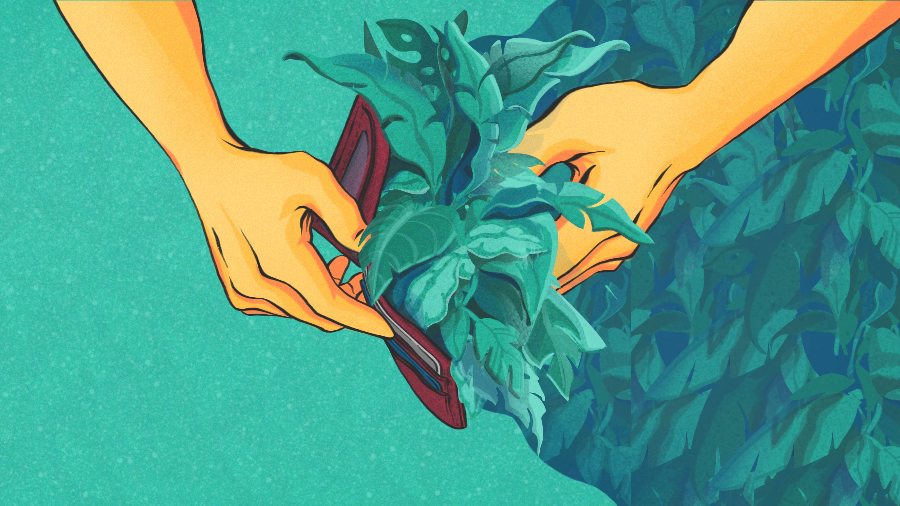Close your eyes and imagine a working farm. Perhaps you see milking stools in a clapboard barn, or a farmer navigating rows of crops on a battered tractor, stepping down here and there to check on their progress.
Subscribe to the Crunchbase Daily
Those are time-honored scenes, but if that’s your image of a farm, you may not have been to one lately. Today’s farms are high-powered and high tech. It’s time to set the record straight and tell more people about it, especially city-dwelling folks.
Taking stock of ag and tech
There’s always been a perception gap between city and country folks. But just like your town or city has changed, farms have, too. The modern world has reshaped farm life to a degree many city people would find astonishing.
Milking stools and barns have been upgraded to office chairs and state-of-the-art control centers powered by analytics software. The tractor is autonomous. And crop quality is evaluated by GPS-enabled ground sensors, which deliver live data on water use, fertilizer needs and pesticide effectiveness.
Now, I grew up in a small city, then spent most of my teens and young adulthood in the suburbs of a big one. My company is city-based. But I was exposed to farm life as a kid, through my father’s family. I visited the farm every year and I loved the land, the fresh air and the way of life. That early exposure still informs the work I do today.
It’s an experience most of my city friends never had. They might have visited a farm once during a school trip years ago, but when I talk to them, it’s clear they close their eyes and see American Gothic.
So it’s no wonder they don’t truly understand the issues, the science and the technological realities associated with modern food production. They don’t know how genetically modified organisms work, or why farmers might want to use them. They don’t see how much farmers do to protect air, soil and water quality. And they don’t understand the many roles of tech. They think self-driving Ubers represent the future. But those autonomous farm tractors I mentioned? Farmers have been using them for 20 years.
A few paths forward
The truth is that there is some incredible technology out there, helping farmers do more with less. Most farmers would happily explain this, but they’re too busy working to tweet about crop data tools. That, however, doesn’t mean the rest of us can’t educate ourselves a bit.
Too often, agriculture gets pegged as the sector with “hand-me-down” technologies, like spray additives originally developed for laundry detergents or new chemical discovery technologies from the drug industry. But there’s a huge desire within the farming and ag community to innovate. In cities and farmlands from coast to coast, there’s enormous opportunity to improve how we produce food.

To better understand how our food gets produced, we need to hear more stories about the tech advances changing agriculture for the better. At Vive, we are always trying to showcase what we do, which is to use a nanotech delivery system similar to the one used in bringing the COVID-19 vaccines to the world.
Agriculture is brimming with futuristic-sounding — but very real — innovations, such as cab-less self-driving tractors, drones with lasers that scan and treat weeds, and irrigation systems that drip-feed crops with the minimum water necessary.
On the business side, we should be encouraging entrepreneurs to focus on agriculture. And encouraging investors to back more ag startups.
There are advantages to working in this space — regulated markets with loyal, sticky customers means a built-in moat for great businesses. It’s also an industry that has some large, incumbent companies beyond the tech bubble of Silicon Valley that are ready for disruption.
On a personal level, we should be looking for ways to educate our kids. I recently joined the board of an organization called Children Learning Through Outdoor Experiences, which gives kids a taste of Tennessee farm life. They don’t do field trips — they partner with teachers to put the farm in a wider context. The visit is curriculum-based learning; an entire class unit gets developed around agricultural issues. It’s comprehensive outdoor learning that kids won’t easily forget. CHLOE is just one organization with one farm in one state, for now, but I’d really like to see educators supporting more programs like it.
These kinds of contacts might also help farmers and their kids understand the people they’re farming for. Because the perception gap goes both ways, and I bet a few of their images of city life are outdated, too.
Darren Anderson is a co-founder, CEO and board member at Vive Crop Protection. He is also on the board of CropLife America, the trade association for the pesticide industry in the USA; a member of the advisory committee for CHLOE, an organization committed to increasing STEM learning through agriculture and natural resources; and a founding member of ElectSTEM, a nonprofit encouraging people with STEM backgrounds to run for political office.
Illustration: Dom Guzman

Stay up to date with recent funding rounds, acquisitions, and more with the Crunchbase Daily.



![Illustration of polar bear on a shrinking iceberg. [Dom Guzman]](https://news.crunchbase.com/wp-content/uploads/Climate_Change-300x168.jpg)

67.1K Followers